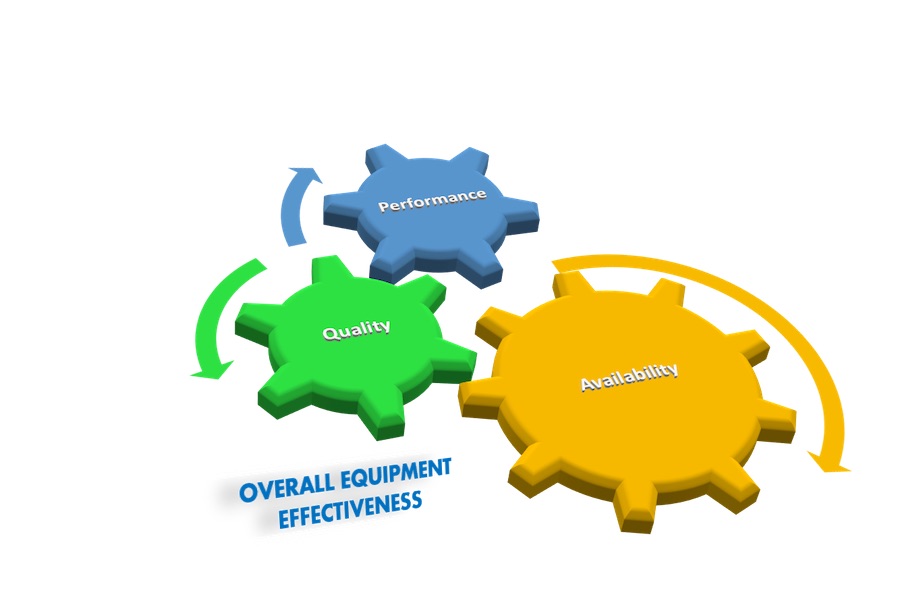Time is money: Increasing productive up-time and OEE
posted on 13 February, 2020 by Anurag Mitra - Product Marketing Manager
As the adage goes, time is money. This is certainly the case when it comes to snack food manufacturing, with product packaging playing an essential role. Ensuring efficiency and productivity by minimising downtime and reducing rejects is essential when it comes to increasing the profitability of any production line. Beyond financial factors, increasing up-time of manufacturing processes helps boost sustainability credentials too.

The concept of OEE (overall equipment effectiveness) is considered as the gold standard when it comes to calculating manufacturing productivity – it measures how well a manufacturing operation is running compared to its full potential. For example, an OEE score of 100% would mean a manufacturer is ensuring zero wastage, with no downtime, as fast as possible. Realistically, 85% is considered an ideal benchmark.
Calculating OEE
OEE is calculated by multiplying availability, performance and quality.
- Availability is the ratio of run time to planned production time. It refers to how readily available equipment is according to its schedule. More specifically, it considers availability loss, including any events that significantly slow production, whether planned (e.g. changeovers) or unplanned (e.g. technical issues or operator issues).
- Performance is based on how much waste is created when running at less than optimal speed. It takes into consideration anything that hinders the speed of production, from slow cycles to unexpected stops. Comparing the actual cycle times with ideal cycle times, performance ultimately highlights just how much production is lost by operating at less than ideal speeds.
- Quality highlights how much time is lost by producing products that don’t meet quality standards. It compares how many good parts are made versus those which are defected, and therefore, the percentage of time being spent on products that meet specification.
Planning for the unplanned
Though these elements are essentially part of the OEE equation, they also highlight key considerations for manufacturers when it comes to general productivity.
While reducing reject rates is a key concern, the biggest challenge for many lies in understanding how to reduce downtime. Unplanned downtime, or unexpected issues, may be the first thing that springs to mind, but optimising performance to reduce planned downtime can also have a significant impact.
Here, we discuss some of the features of the tna robag® 3 and how they can help to maximise productivity.
tna robag®: Promising productive up-time
- Advanced film feed system: improves film handling and provides more consistent film tension. With its single straight through film pass, it offers easy film threading and high accuracy control, meaning changeovers are carried out quickly and efficiently to keep downtime to a minimum.
- Stripper tube-closers: part of the tna robag® jaw system, the stripper bars clear product from the seal area, after which the tube closers shut off the tube of film while the stripping action is performed. This allows for clearing of the packaged product from the sealing area, meaning the next batch of product can be delivered above the tube closers with no product falling through to the seal area to impede seal integrity.
- Product in-seal detection (PISD): software that monitors the jaw motion of the tna robag®, it triggers a reject mechanism if large pieces of product are detected in the seal areas or pleats. PISD also monitors bag seal output and automatically selects the optimum speed to waste performance, ensuring maximum up-time.
- Former unload assist: an innovative, patented pivot arm assembly design, which facilitates the unloading and replacing of the former quickly and easily. The ability to change out formers using side access, rather than the traditional front access, shortens product changeover times, while reducing manual effort. From a manufacturer’s point of view, being able to make quicker former changes increases production uptime and improve overall plant performance, aiding the performance element of OEE.
Beyond the bagger, ancillary equipment can also help to achieve optimum productivity:
- tna hyper-detect® 5: helps to achieve optimum productivity. Created with a patented design, the tna hyper-detect 5 metal detector can be positioned much closer to the multi-head weigher, dramatically increasing the speed at which the bagger can produce finished bags, while keeping products safe from contamination.
- tna intelli-date® 5: the smartest thermal transfer overprint (TTO) date coder on the market, the tna intelli-date 5 utilises an airless all-electronic system, integrated code defect detection and easy-to-change ribbon drive to help improve up-time and productivity by reducing waste and rejects.
For further information about the tna robag® series, visit: http://www.tnasolutions.com/solutions/packaging-solutions/



 Español
Español  Português
Português  Italiano
Italiano  日本語
日本語  中文
中文  Français
Français  Deutsch
Deutsch  Русский
Русский  العربية
العربية 





